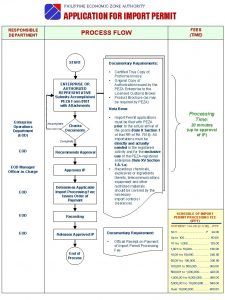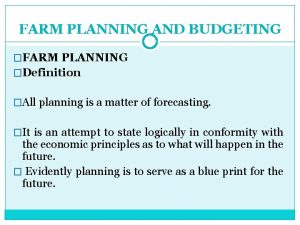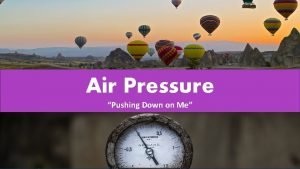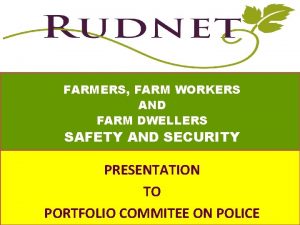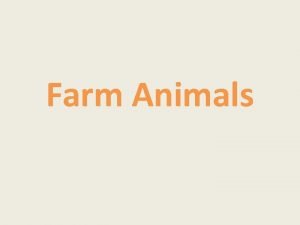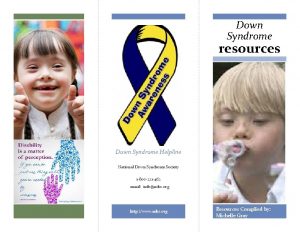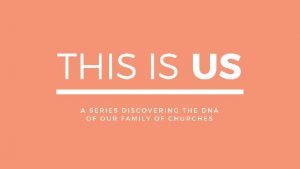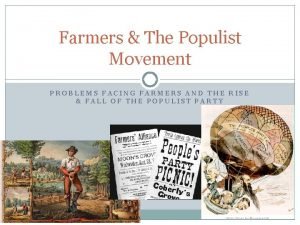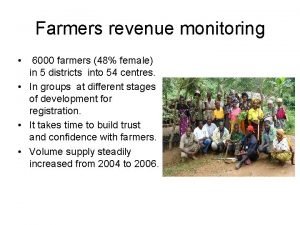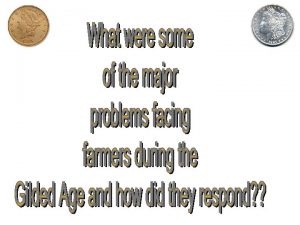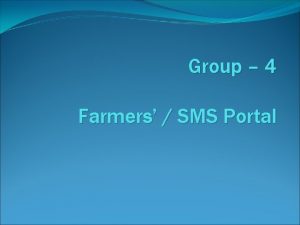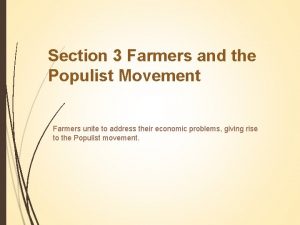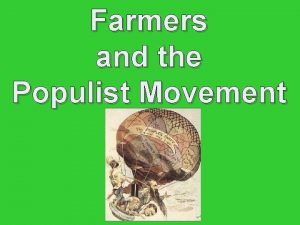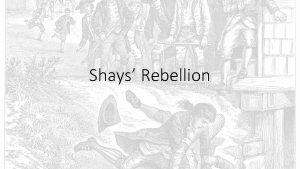Down on the Farm SUPPORTING FARMERS IN STRESSFUL
































- Slides: 32

Down on the Farm SUPPORTING FARMERS IN STRESSFUL TIMES

Instructor Information Insert your contact information here. Workshop developed by Ag. Centric – MN State Northern Center of Agricultural Excellence and Minnesota Department of Agriculture through support from SARE under award number ENC 18 -170.

Introductions Who are you? What is your connection to farming

Objectives 1. Recognize the causes of stress in farming. 2. Identify signs of mental and emotional distress in the farmers and farm families 3. Learn to use active listen skills. 4. Recognize how and why to take care of your own emotional and mental health in stressful situations 5. Identify and increase awareness of local and regional resources available.

What do the headlines say

State of Farm Finances

2018: $26, 000

What are farm conditions like now?

Farm Business Management Survey audience – 67 faculty, 2500+ farmers Mediation – precursor to foreclosure

Farmers & Stress - What do we know

Farmers & Stress - What do we know The nature of farming Loss of Identity Loss of the land Isolation Self-reliant and independent long low days priority on personal health

What does stress look like What are the signs? • Physical • Mental • Emotional • Behavioral • Social

What are the Signs and Symptoms of Stress

Signs of Chronic & Prolonged Stress Change in routine Physical appearance Care of livestock/fields Increased Increase Change illness in farm accidents in appearance of farm Children show signs of stress

Crisis Intervention Short Term Primary Goal: to reestablish a person’s equilibrium and to solve an immediate problem. Benefits Diffuse intense emotions. Return the person to her/his normal functioning level. Buy time. Establish rapport by communicating empathy. Gather information.

Crisis”: a situation in which a person’s ability to cope is exceeded It’s not if it’s going to happen -- it’s when Emotions, not reason, control the person’s actions He or she perceives the situation as a threat to their emotional, psychological, and physical needs His/her Your usual coping mechanisms do not work task: help the person return to her/his normal functioning level

Sympathy vs Empathy You want to understand what they are feeling, NOT feel what they are feeling Empathy implies objectivity and understanding. Empathy builds trust


Active Listening

Listen without Judgement Be accepting Do not inject your own values or emotions into the situation This is about THEM not YOU!!!!

Active Listen steps Look at the person, and stop any other things you are doing. Listen not merely to the words, but the feeling content. Be sincerely interested in what the other person is talking about. Restate what the person said and ask clarification questions. Summarize – are there next steps

Paraphrasing Summarize Why in your own words what she/he just told you it works: Demonstrates you’re listening Creates empathy and rapport Clarifies content and highlights issues Doesn’t put them on the defensive – because you're using their words May be hearing their own demands/emotions for the first time

Reflecting/Mirroring Repeat the last word or phrase the person said and put a question mark after it. Why it works: Gives feed back that is very exact Asks for more information without guiding the direction Gets information even when you don’ know enough to ask a good questions

Reflecting and Mirroring in Action Jack Webb video

Open Ended Questions Can’t Get be answered with a “yes” or “no” you information without asking a lot of questions Usually where Why begin with the words: how, when, what, it works: Help people start talking Elicit examples of specific behavior Get additional information

Practice

Active Listening Review Listen: what are they trying to say and what message are they giving? Open-ended questions: “Can you tell me about it? ” Keep calm, don’t rush, Think before you speak Speak Act Softly/slowly Respectful

Strategies for helping Two additional resources 1. Responding to Distressed People – NDSU Extension 2. How to talk with farmers under stress – Michigan State University Extension

Mental/Emotional Safety Taking care of yourself is harder than taking care of others Use your personal energy wisely Stress contributes to more than 80% of diseases. Your stress is no less significant than other people’s

Physical Safety You are responsible for your own safety Risk depends where are you and when Workplace Active safety shooters Weapons Basic self defense Sovereign citizens

Identification of local resources List up to three resources • include name person or organization • Add any additional contact information • Why YOU recommend them.

Review Farming is stressful Identified Active the signs of stress listening skills Recognize health Identified personal safety and personal mental community resources.
 In a stressful situation feelings of pain are dulled by
In a stressful situation feelings of pain are dulled by What does pinchfield farm represent
What does pinchfield farm represent Form 8105 peza
Form 8105 peza Importance of farm budget
Importance of farm budget Harmouns
Harmouns Pressure pushing down on me
Pressure pushing down on me Our father all of heaven roars your name lyrics
Our father all of heaven roars your name lyrics I fled him
I fled him Hands on hips text
Hands on hips text There's a place where mercy reigns
There's a place where mercy reigns Làm thế nào để 102-1=99
Làm thế nào để 102-1=99 Hát lên người ơi
Hát lên người ơi Lời thề hippocrates
Lời thề hippocrates Khi nào hổ con có thể sống độc lập
Khi nào hổ con có thể sống độc lập đại từ thay thế
đại từ thay thế Vẽ hình chiếu vuông góc của vật thể sau
Vẽ hình chiếu vuông góc của vật thể sau Quá trình desamine hóa có thể tạo ra
Quá trình desamine hóa có thể tạo ra Công thức tính độ biến thiên đông lượng
Công thức tính độ biến thiên đông lượng Thế nào là mạng điện lắp đặt kiểu nổi
Thế nào là mạng điện lắp đặt kiểu nổi Dạng đột biến một nhiễm là
Dạng đột biến một nhiễm là Bổ thể
Bổ thể Vẽ hình chiếu đứng bằng cạnh của vật thể
Vẽ hình chiếu đứng bằng cạnh của vật thể độ dài liên kết
độ dài liên kết Các môn thể thao bắt đầu bằng tiếng bóng
Các môn thể thao bắt đầu bằng tiếng bóng Sự nuôi và dạy con của hổ
Sự nuôi và dạy con của hổ điện thế nghỉ
điện thế nghỉ Một số thể thơ truyền thống
Một số thể thơ truyền thống Thế nào là sự mỏi cơ
Thế nào là sự mỏi cơ Trời xanh đây là của chúng ta thể thơ
Trời xanh đây là của chúng ta thể thơ Thiếu nhi thế giới liên hoan
Thiếu nhi thế giới liên hoan Bảng số nguyên tố lớn hơn 1000
Bảng số nguyên tố lớn hơn 1000 Vẽ hình chiếu vuông góc của vật thể sau
Vẽ hình chiếu vuông góc của vật thể sau Tỉ lệ cơ thể trẻ em
Tỉ lệ cơ thể trẻ em


